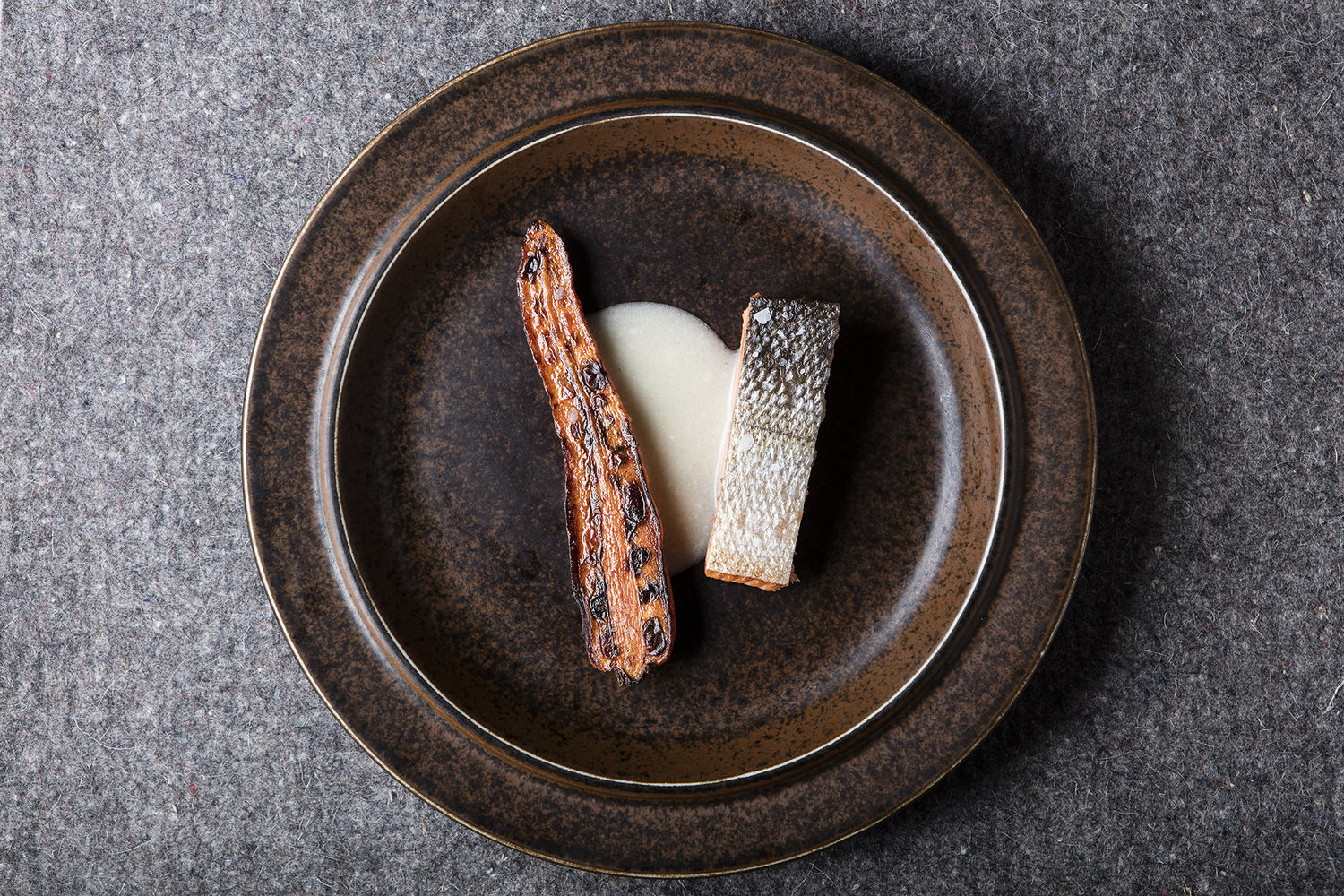Image: The Alder Room
What does your brain tell you about what’s on the end of your fork? This leader in gastrophysics (where high-end dining meets the study of human perception) has a few things to say.
Written by Charlene Rooke
A lyrical melody with sonorous notes by Canadian composer Maxime Goulet envelops the crowd at a downtown Toronto venue, as guests savour creamy chocolate caramels. As the symphonic music turns passionate, the deliciously bitter finish of a dark chocolate morsel lingers.
This isn’t an elegant summer wedding: “Symphonic Chocolates” is playing to an academic crowd at the International Multisensory Research Forum, where Oxford prof and author Charles Spence is a keynote speaker. This serving of complementary sound and flavour notes is just the kind of mind-bending experiment Spence celebrates in his book Gastrophysics: The New Science of Eating—a kind of Freakonomics for foodies. “The pleasures of the table reside in the mind, not in the mouth,” Spence writes, describing gastrophysics as the intersection of gastronomy (fine dining) and psychophysics (the scientific study of human perception). He traces his theory in chapters about how the senses prime our brains while eating through future-thinking explorations of personalized, experiential, and digital dining (from 3D-printed food to augmented reality and robot chefs).
If you’ve tasted modernist cuisine or sipped molecular mixology, you know how the texture of olive oil foam or the whiff of a smoked Manhattan can significantly impact the experience. “There was a time when people said, ‘How can the colour of the plate change the taste of food, or certain music make food seem sweeter?’ It’s taken a number of years for the findings and interest to mount up,” says Spence.
He was ahead of the awareness curve when he co-authored The Perfect Meal: the Multisensory Science of Food and Dining in 2014. Spence himself has collaborated extensively with the UK restaurant, The Fat Duck, where chef Heston Blumenthal is a pioneer in multisensory dining (think: the Sound of the Sea, a dish with edible “sand,” seaweed, and an iPod soundtrack of shore noises). Today, the restaurant, food-marketing, and wellness industries not only accept findings like Spence’s, they act on them.
Market Food


While Spence is upfront that some of the work in his Crossmodal Research Laboratory at Oxford has been funded by the food industry over the last 20 years, he believes that gastrophysics is not only fodder for marketers but important for consumers to understand. Take research about plates, for example: our hungry eyes tell us that food on round plates tastes sweeter, and to avoid red-plated food, so we actually eat less—important learnings for buffet restaurants, but perhaps also for dieters.
“The insights are just the insights. They are not intrinsically good or evil, they can be used in both ways,” says Spence, who also cites a hospital study that used blue plates to make food more appealing to advanced Alzheimer’s patients. “I try to make people aware of the influences that are going on. Hopefully they can be more aware when such things are used on them, and potentially use them, themselves.”
For instance, you could download some “sonic seasoning” music, spritz infusions of your cooking herbs and spices at the table or get your guests to rub velvet, Velcro or sandpaper swatches while tasting red wine (all experiment documented in the book), to gastrophysicize your next dinner party. Oh, and bring out the good silver: We all know intuitively that Champagne doesn’t taste as good from a plastic cup, but Spence’s research shows that people rate food as better-tasting when they use luxe, heavy cutlery
Digital Dining


Spence has much to say about the modern impacts of so-called food porn, including the Korean social-media phenomenon of mukbang (where millions of videos are shared of ordinary “online eaters” chowing down; “skeating,” or sharing a meal over Skype, is Spence’s cheeky coinage for long-distance dining). Research shows that viewing food images increases hunger, promotes unhealthy eating, drains our ability to resist food, and even correlates with a higher body mass index — a particularly unique fact given social media’s obsession with food culture. Virtual dining robs us of the innately human, social experience of sharing a table. “‘Tapatization’ and sharing plates are on the rise, so sharing is definitely in. At the same time, the rise of solo diners and how people virtually share a meal raises fundamental questions about whether that’s a shared dining experience,” says Spence.
Rather than prodding Instagrammers and Food Network addicts to put down their screens, Spence asks: “[mobile] technology is already there, so how can we incorporate it positively into food experiences?” Everything from the clever notched Offline Glass that requires you to put your smartphone down to prop up your beer, to restaurants experimenting with using a tablet screen as an actual plate, are setting the future table.
Tasting Taboos


Forget raw uni or sliced sashimi: on two Japanese islands, “dancing squid” is the local delicacy. The tentacled critter (actually a cuttlefish) wriggles in the bowl like it’s in death throes, an equally horrifying and fascinating spectacle captured by countless video gastronauts. It’s not actually alive, but the sodium chloride in soy sauce activates latent electrical impulses in the flesh.
Spence refers to this animate dish in describing to the squeamish “meat paradox”: people don’t want to hurt animals, although we don’t mind eating them—especially when “cow” is made palatable by calling it beef, or “pig” as bacon, to “distance ourselves from the animal,” he says. It’s easy to see how the meat paradox can lead to meat avoidance, and even to vegetarianism or veganism at one extreme. Taboo proteins (like tartare from raw seal at Ku-Kim Kitchen or raw horse at the Black Hoof, both in Toronto) and dishes at the other extreme of the meat spectrum are “changing notion of what’s acceptable now,” says Spence, who believes that food trends correspond to the cultural flavour of the day.
“We seek out the adventurous and the unusual in food at times when we feel sure about the world. And at times of upheaval, we seek out things that are familiar.” He says kitschy 1970s-style cheese fondue, for instance, is having a renaissance in Brexit-stressed Britain, where Spence speculates diners are subconsciously seeking comfort and envying the neutral place Switzerland occupies in the European Union and the world.
Like many of the challenging theories in Gastrophysics, it’s food for discomfiting thought in a world where technology is overturning human traditions, including the dinner table.








